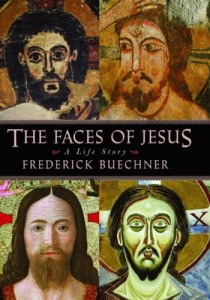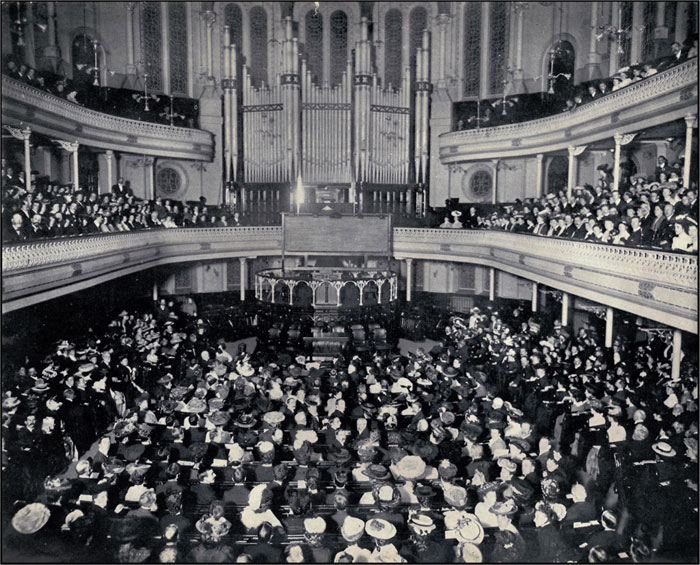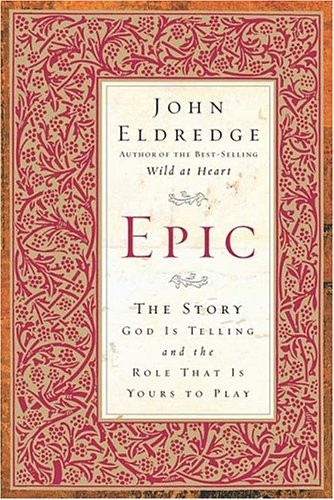Faces
To say he had a face is to say that like the rest of us he had many faces as the writers of the Old Testament knew who used the Hebrew word almost exclusively in its plural form. To their way of thinking, the face of man is not a front for him to live his life behind but a frontier, the outermost, visible edge of his life itself in all its richness and multiplicity, and hence they spoke not of the face of a man or of God but of his faces. The faces of Jesus then — all the ways he had of being and of being seen. (Frederick Buechner)
 I’ve been looking through The Faces of Jesus, which I picked up at the library. It’s a collection of artistic representations of Jesus through the ages, divided into six sections: Annunciation, Nativity, Ministry, Last Supper, Crucifixion, and Resurrection. Frederick Buechner wrote the text, which is how I discovered the book.
I’ve been looking through The Faces of Jesus, which I picked up at the library. It’s a collection of artistic representations of Jesus through the ages, divided into six sections: Annunciation, Nativity, Ministry, Last Supper, Crucifixion, and Resurrection. Frederick Buechner wrote the text, which is how I discovered the book.
It is fascinating and, as one might expect, unsettling. It brings me face to face again with the strand of violence running through my faith. Given the season, I’ve dwelt more on the pictures of the last three sections, and though I think part of the Easter season is grappling again with the horrors as well as the blessings of Christ’s life, it’s not easy. I guess I’m glad. I’m glad it isn’t tamed by familiarity.
One of the dramatic moments in our decision to homeschool happened during this season. My oldest was in public school kindergarten, and it was the first year we did our Easter countdown using objects from the story. (I mention the countdown tradition in this post.) I remember that what Jesus had gone through for us sank in for her, and she said, “That’s terrible!” and looked hard at my face to make sure she was understanding it right — and, I believe, to make sure I, too, recognized how terrible it was.
It was a powerful moment for me. “I want to be in on more of these moments of revelation,” I thought.
If you are a visual person or an artistic person, you would probably find this book to be a rich source for meditation. And the text by Buechner reflects his characteristic depth and artistry. I haven’t read every word, but those I have read do what Buechner does best, underscoring the relevance of the Bible’s mysteries and wonders to my everyday life.
The earliest reference to the resurrection is Saint Paul’s, and he makes no mention of the empty tomb at all. But the fact of the matter is that in a way it hardly matters how the body of Jesus came to be missing because in the last analysis what convinced people that he had risen from the dead was not the absence of his corpse but his living presence. And so it has been ever since.




3 Comments
GretchenJoanna
This is certainly something I’ve never thought of before. I would love to read the text by Buechner — I wonder if even this one concept in the excerpt you give, of the face as a frontier, might help me in my effort to pay better attention to people I am with — but that is just a small part of what might come of contemplating the face(s) of Christ, into Whose likeness God wants to change us….
GretchenJoanna
I had to go to the library today anyway, and lo and behold, Faces of Jesus was at my little branch! So I brought it home, and the very little time my husband and I have spent so far leafing through the pictures has been rewarding.
As I was looking for it, I realized that it was not Listening to Your Life, but The Sacred Journey, stories of Buechner’s own life, that had such an impact on me many years ago. I have Listening, too, but haven’t read the whole thing.
Janet
I’m so glad your library had a copy of ‘Faces’!
I learned the other night that ‘Sacred Journey’ is one of several consecutive autobiographical books Buechner has written. I’m curious to delve into another one of them.